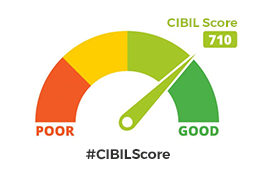Instruments used by RBI or Commercial Banks to have a deep impact over your mortgage loan
To control inflation and the growth, RBI uses certain tools like cash reserve ratio, SLR ratio, Repo rate, and Reverse repo rate, CRR, and Base rate.

The equated monthly installments (EMIs) homeowners pay toward a mortgage loan are influenced by home loan interest rates; resulting in the total amount of money you pay toward your mortgage loan.
The central bank is assigned many tasks such as the extent of money in circulation, controlling the liquidity in the system, the banks’ operation, and the currency exchange ratio. Here are some implements, which the commercial or RBI banks use, and have a deep impact on your mortgage loan.
What is Repo Rate?
Repo rate is also known as the benchmark interest rate is the rate at which the RBI lends money to the banks for the short term. When there is an increase in the repo rate, borrowing money from RBI becomes more expensive. If RBI wants to make it more expensive for the banks to borrow money, it increases the repo rate likewise, if it wants to make it cheaper for banks to borrow money it decreases the repo rate. The current repo rate is 4%.
What is the Reverse Repo rate?
Reverse Repo rate is the short term borrowing rate at which RBI borrows money from banks. The Reserve bank uses this tool when it feels there is too much money floating in the banking system. An increase in the reverse repo rate means that the banks will get a higher rate of interest from RBI. Consequently, banks prefer to lend their money to RBI which is always safe instead of lending it to others (people, companies, etc.) which is always risky.
What is CRR (Cash Reserve Ratio)?
Banks in India are required to hold a certain proportion of their deposits in the form of cash. However banks do not hold these as cash with themselves, they deposit such cash with RBI, which is considered as equivalent to holding cash with them. This minimum ratio (that is the part of the total deposits to be held as cash) is stipulated by the Reserve Bank of India and is known as the CRR.
What is SLR?
Every bank is necessary to uphold at the close of business daily, a minimum proportion of their Net Demand and Time Liabilities as liquid assets in the form of cash, gold and un-encumbered approved securities. The ratio of liquid assets to demand and time liabilities is known as the Statutory Liquidity Ratio (SLR). Reserve Bank of India is authorized to increase this ratio by up to 40%. An increase in SLR also prohibits the bank’s leverage position to propel more money into the economy.
What is Base Rate?
A base rate is the lowest interest rate that a bank charges its customers. Banks decide the base rate. It is within the rights of bank management to change it. The RBI does not directly control it, though it influences it through the repo rate and other instruments. When the RBI cuts the repo rate, for instance, banks may lower the case rate.
From the above information you must have got to know the terms like cash reserve ratio, SLR ratio, Repo rate, and Reverse repo rate, CRR, and Base rate if you looking for a home loan. These are the tools used by RBI mainly to control inflation and for the economic growth.
Disclaimer: The views expressed above are for informational purposes only based on industry reports and related news stories. Propertypistol does not guarantee the accuracy, completeness, or reliability of the information and shall not be held responsible for any action taken based on the published information.




